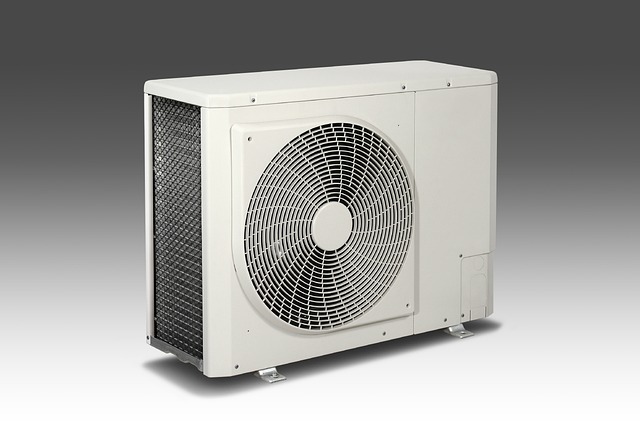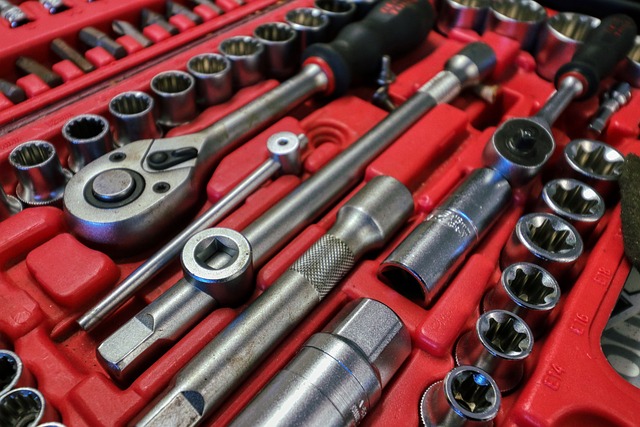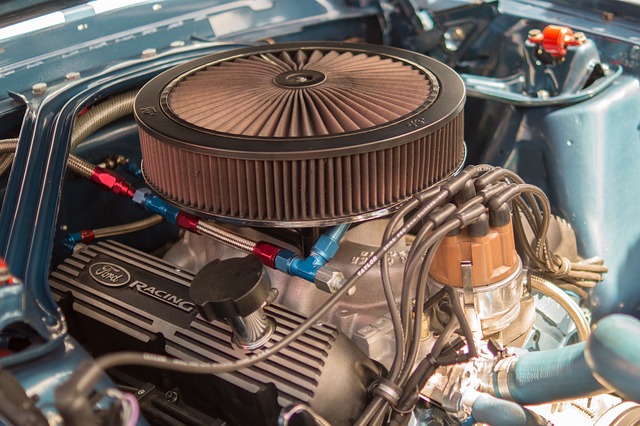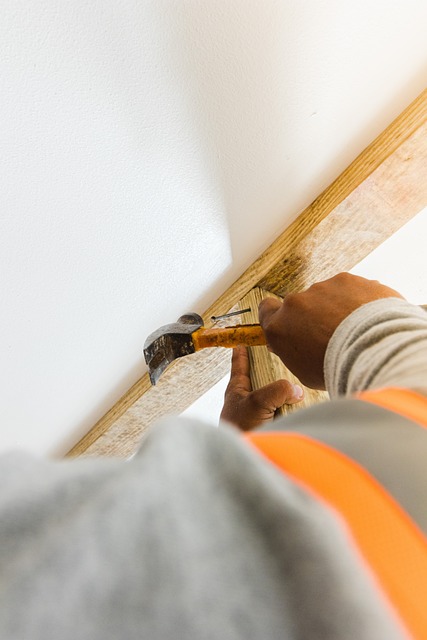Upgrading to a programmable or smart thermostat can significantly improve your home's energy efficiency and comfort. These modern devices offer precise climate control through scheduling or by learning your habits and preferences, potentially saving energy when you're away and ensuring comfort upon your return. They also allow for remote adjustments via apps, which can help maintain optimal HVAC performance and reduce the need for costly repairs. Importantly, before installing a new thermostat, it's crucial to review your current HVAC system to ensure compatibility with the latest technology, possibly requiring updates or repairs to older systems. This includes verifying that your HVAC infrastructure supports the necessary communication protocols and that your Wi-Fi connection is robust and secure. By carefully planning and possibly consulting with HVAC professionals for an assessment and any required system upgrades, you can ensure a smooth transition to a more energy-efficient and user-friendly climate control experience. This proactive approach not only enhances daily comfort but also contributes to sustainable living practices by promoting energy savings and efficient HVAC operation.
Upgrading from an old thermostat to a programmable or smart model can significantly enhance your home’s energy efficiency and comfort. This article delves into the transformative impact of such an upgrade, detailing the benefits, compatibility considerations with your HVAC system, and a comprehensive guide for selecting the ideal thermostat. We explore the critical role of HVAC repair in optimizing your system for the new device. A cost analysis is provided to help you understand the initial investment versus long-term savings. Furthermore, practical tips ensure seamless installation and integration with your existing setup. Learn about programming strategies, the advantages of Wi-Fi connectivity, and navigating the user interface of modern thermostats. Additionally, discover how to maximize savings with energy-saving programs and rebates, troubleshoot common issues during the transition, and maintain your thermostat for peak performance. Real-life case studies illustrate tangible energy savings, while insights into the environmental benefits highlight the importance of this upgrade in today’s climate. Embrace the future of home HVAC management with advanced technologies that promise to keep you comfortable and energy-wise.
- Understanding the Benefits of Upgrading to Programmable and Smart Thermostats
- Evaluating Your Current HVAC System and Thermostat Compatibility with New Models
- Step-by-Step Guide to Choosing the Right Programmable or Smart Thermostat for Your Home
- The Role of HVAC Repair in Preparing for Thermostat Upgrade
Understanding the Benefits of Upgrading to Programmable and Smart Thermostats

Upgrading from old thermostats to programmable or smart models offers a multitude of advantages that can enhance comfort, energy efficiency, and overall control over your home’s climate. Programmable thermostats allow for pre-set adjustments in heating and cooling systems based on the household’s schedule, leading to significant energy savings by reducing HVAC operation when no one is home or during off-peak hours. Smart thermostats take this a step further with their advanced algorithms and learning capabilities, adapting to your lifestyle and adjusting the climate settings automatically for optimal comfort and efficiency. They often come equipped with user-friendly interfaces that can be accessed remotely via smartphones or other devices, providing homeowners with the ability to monitor and control their HVAC systems from anywhere. This not only contributes to reducing energy consumption but also minimizes the need for costly HVAC repair services by ensuring your system operates at peak performance. Moreover, these intelligent devices can provide valuable insights into your energy usage patterns, enabling you to make informed decisions about your home’s climate control and potentially leading to lower utility bills. The transition to a programmable or smart thermostat is a forward-thinking move that aligns with the increasing demand for sustainable living solutions.
Evaluating Your Current HVAC System and Thermostat Compatibility with New Models

Upgrading from an old thermostat to a programmable or smart model can significantly enhance your home’s energy efficiency and comfort levels. Before making the switch, it’s crucial to evaluate your current HVAC system to ensure compatibility with new technology. An existing system that is outdated may require HVAC repair or replacement parts to function optimally with a newer thermostat. For instance, if your system utilizes an older protocol like non-WiFi enabled wiring, you might need professional assistance to update the infrastructure and integrate smart thermostat capabilities. Programmable thermostats often come with specific requirements, including compatible voltage levels and circuitry that may differ from those in older homes. It’s advisable to consult with HVAC professionals who can assess your system and guide you on the necessary steps for a seamless transition. Additionally, smart thermostats require a reliable Wi-Fi connection to access their full range of features, such as remote monitoring and control via smartphones or other devices. Ensuring that your home’s network is robust and secure will prevent connectivity issues that could hinder the performance of your new thermostat. By thoroughly assessing your HVAC system’s current state and ensuring all components are up to date, you pave the way for a smooth integration of a programmable or smart thermostat, leading to energy savings and enhanced control over your home’s climate.
Step-by-Step Guide to Choosing the Right Programmable or Smart Thermostat for Your Home

Upgrading from an old thermostat to a programmable or smart model can significantly enhance your home’s energy efficiency and comfort. When selecting the right thermostat, consider compatibility with your existing HVAC system, as this is crucial for seamless integration and optimal performance. Start by evaluating your current heating and cooling setup to determine which smart thermostats are compatible. For instance, if your HVAC system uses a particular protocol like Wi-Fi, Zigbee, or radiant floor heating, ensure the new thermostat supports it.
Once you’ve established compatibility, think about your lifestyle and usage patterns. Programmable thermostats allow you to set schedules for different times of the day or week, reducing energy use when no one is home and ensuring comfort upon your return. Smart thermostats take this a step further with advanced features like remote access via smartphone apps, voice control through digital assistants, learning capabilities to adapt to your preferences, and detailed energy usage reports that can lead to more informed HVAC repair decisions and maintenance schedules. By considering these factors, you’ll be able to choose a thermostat that not only fits your home’s requirements but also enhances your daily life, leading to potential savings on energy bills and contributing to a more sustainable environment.
The Role of HVAC Repair in Preparing for Thermostat Upgrade

Prior to upgrading your thermostat to a programmable or smart model, it’s crucial to ensure that your HVAC system is functioning optimally. Engaging in comprehensive HVAC repair is not just about addressing any immediate issues; it’s about preparing your entire climate control system for the integration of new technology. A malfunctioning HVAC unit can impede the performance of even the most advanced thermostats, leading to inefficiencies and potential system malfunctions. Therefore, a thorough inspection and repair by HVAC professionals are essential steps. They can pinpoint existing problems that could affect the thermostat’s ability to accurately regulate your home’s temperature. By resolving these issues, you lay the groundwork for your new thermostat to operate as intended, ensuring that it communicates effectively with your HVAC system and delivers energy savings and enhanced comfort. This proactive approach not only extends the lifespan of your HVAC equipment but also maximizes the benefits of your upgraded thermostat.
Upgrading from an old thermostat to a programmable or smart model represents a significant step towards enhancing energy efficiency and comfort in your home. By understanding the benefits, assessing compatibility with your current HVAC system, and carefully selecting the right device for your needs through the outlined guide, you can ensure a seamless transition. It’s imperative to consider professional HVAC repair services before installation to guarantee optimal performance of both your system and the new thermostat. With these upgrades, homeowners can experience improved energy savings and greater control over their indoor environment. This transformation not only elevates your daily living experience but also contributes positively to environmental sustainability.
